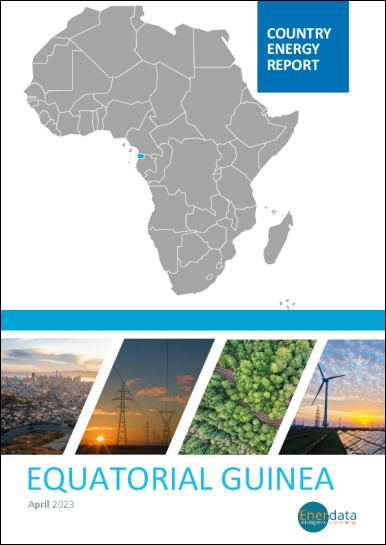- Update
-
- Format
- 3 files (PDF report, 2 Excel files)
- Pages
-
26 (Report only)
- Delivery
- Immediate by e-mail
- GENERAL OVERVIEW
- INSTITUTIONS AND ENERGY POLICY
- ENERGY COMPANIES
- ENERGY SUPPLY
- ENERGY CONSUMPTION
- DATA TABLES
- ABBREVIATIONS
- GLOSSARY
Buy Equatorial Guinea energy report
Price without VAT. Depending on your statute and location, VAT might be applicable. Get in touch with us for more information.
After validation, you will immediately receive 3 files by email (one pdf report and 2 excel files containing the datasets).
Overview
This analysis includes a comprehensive Equatorial Guinea energy market report and updated datasets. It is derived from the most recent key economic indicators, supply and demand factors, oil and gas pricing trends and major energy issues and developments surrounding the energy industry. The report provides a complete picture of the country situation, dynamics, current issues and future prospects. With market data and continuous follow-up of markets news, this report brings clear and concise insights with which to tackle national energy challenges and opportunities. Browse the tabs below for a detailed table of contents, the list of graphs and tables, and details on the data files.
Highlights
- In 2023, Equatorial Guinea granted offshore exploration blocks to Panoro Energy, Africa Oil Corporation, and Antler Global
- ExxonMobil announced its intention to leave the country in the second quarter of 2024.
- Marathon and Chevron are the main gas producers.
- Crude oil production has decreased by 60% since 2014.
- Gas production has experienced a notable rebound since 2020 (18%/year).
- Total energy consumption per capita is rather high compared to the other sub-Saharan African countries.
- Equatorial Guinea plans to expand its natural gas production and to become a regional hub.
- The commissioning of the 200 MW Sendje hydropower plant will increase the power capacity by 60%.
Institutions & Energy Policy
Equatorial Guinea is a small country consisting of two main parts: the island of Bioko, in the Gulf of Guinea, which is where the country's capital Malabo is located; and a mainland region that is bordered by Cameroon to the north and by Gabon to the south and east.
The Ministry of Industry and Energy oversees the development and implementation of energy policies.
Energy Companies
Electricity:
Segesa, Equatorial Guinea Electricity Company (62% State owned, 38% Spanish company Infinsa) is the national electric utility. In 2013 the company was unbundled.
Energy Supply
Oil:
Since 2012, when it reached 16.6 Mt, the production of crude oil and condensates has been decreasing by around 6%/year, reaching 7.1 Mt in 2022. It increased dramatically following the commissioning of the first field of Alba in 1996 and then the Zafiro field, reaching a peak of 19 Mt in 2005. About 85% of the production is in the form of crude oil and 15% as condensates.
Energy Consumption
Energy consumption per capita is almost 2.1 toe, including 850 kWh of electricity (2022).
 Energy and Climate Databases
Energy and Climate Databases Market Analysis
Market Analysis